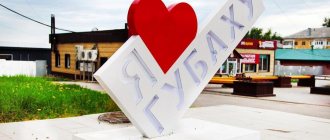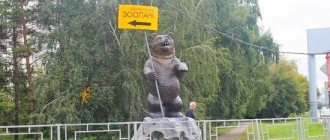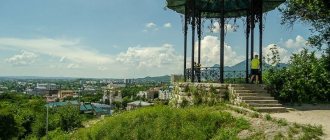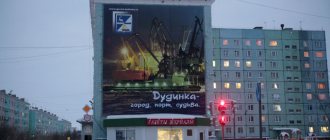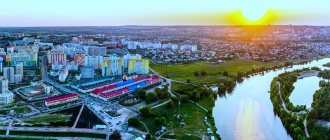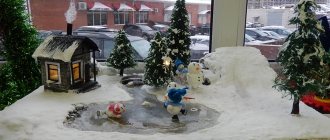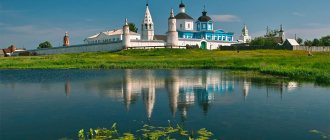Read: 2,884
Minsk has recently become a transit city through which people travel by their own transport, stopping only for a few hours, or make a transfer at the airport or train station. It is these passengers and tourists who do not have enough time to fully explore the city, and therefore need information in order to plan their stay in the city, including visits to interesting tourist sites and shopping centers. Having this information, before visiting Minsk you also need to decide in advance specifically about those places in the city that you want to see. This is important for the reason that you can more competently manage and use your available free time, which you will already have in short supply.
Shopping and entertainment centers
Shopping Near the railway station, within walking distance, there are two large shopping and entertainment business centers: the underground city of the Capital and Galileo. It is Galileo that can attract your attention because there is a food court with a large number of different catering establishments, where you can choose and order a completely different assortment of dishes prepared according to recipes from chefs from around the world. Shopping As for the shopping center in the underground city of Capital, here you can find stores of various manufacturers of goods from all over Belarus. In addition to souvenirs, you can also buy alcoholic beverages, cosmetics, linen products, confectionery products produced by Belarusian enterprises, as well as a variety of high-quality clothes and interesting designs, and shoes.
Museums for young people
Experimentus
It is a museum complex of sciences and a store where you can buy kits for home experiments, board and logic games, construction sets, books and posters.
By visiting Experimentus, you will be able to take part in a scientific and entertainment show, see an interactive exhibition of illusions, and touch all the exhibits presented at the exhibition. While walking around the museum, the children will be shown various experiments and told about how the basic laws of physics work. You will see the most famous inventions of scientists and will be able to conduct a series of experiments with a guide. The most enchanting part of the program will be a show with chemical experiments, for which well-known improvised means are used.
Komarovsky market
As for the possibility of purchasing high-quality food products from the meat and dairy group of goods with you on the road, then in this case it is recommended that you visit, without a doubt, the Komarovsky market, which is located in the city center, and you can get to it from the train station by tram or metro. It is in this place that you can purchase various types of food products made by producers in different parts of Belarus. Only in this place in Minsk you can buy not only delicious, but also fresh food. Because here the country's commodity producers have the opportunity to rent retail space for themselves at low prices. That is why your basket may also include fresh meat products, a variety of dairy products, cheeses and canned goods, fresh bread, Belarusian vegetables, berries and fruits.
Quests
Zigzag
Children from 5 to 12 years old will be able to take part in quests from Zig-Zag. Little visitors have a choice of 4 game options. The first one is designed for children from 5 years old and includes going through different locations with a professional animator. The second one can be taken by older children, from 8 years old. This is a team game, during which the guys look for each other in designated areas. And the most difficult format of the quest is offered to teenagers from 10 years old. This is an exciting journey where players will find themselves on board a spaceship, where many interesting mysteries await them.
Pandora's Box
The company provides a choice of interesting quests for teenagers from 8 to 12 years old. This is an exciting Treasure Hunt adventure where the team will have to overcome many obstacles on the way to the treasure. Another interesting quest is “Dracula’s Dungeon,” which is open to participants over 14 years of age. For the youngest visitors, quests can be supplemented with a sweet table, a photo session, and a nitrogen show.
Trading house on Nemiga, TSUM, GUM
Trading house on Nemiga If you are interested in industrial groups of goods, the quality of which Belarusian manufacturers are famous for: haberdashery goods, men's and women's shoes, high-quality women's and men's knitwear, shoes from Minsk, Grodno and Vitebsk - you can buy all this in large department stores, built back in Soviet times. In order to get to the trading house on Nemiga, the Belarus, TSUM and GUM department stores, you will need to use the subway. But it is in these retail outlets that the entire range of goods from most manufacturers in the light industry, hosiery and cosmetics industries is presented.
Zybitskaya
Zybitskaya Street is the center of nightlife, the most party place in the capital. A popular pedestrian street among lovers of nightlife, it is located in the historical district of the city, not far from the Nemiga metro station. It is always noisy and crowded, the atmosphere of communication and freedom in the best sense of the word is pronounced, street musicians often perform. This is one of the oldest streets in Minsk, which began to be populated in the early Middle Ages, in the 15th century. Zybitskaya is known for the largest number of bars, restaurants and nightclubs, which began to appear here in November 2013. At this time, the Attic bar was opened. New establishments on the street open every two weeks. Among them are coffee shops, authentic hookah bars, cafes with national cuisine and flavor, etc. On Zybitskaya there is an interesting beer bar-shop Barshop Beercap, which offers a huge assortment of craft beer, which can be tasted in the cozy halls of the bar.
Komsomolskaya and Revolutionary
The ancient Revolyutsionnaya Street, which until 1922 was called Koidanovskaya, descends from the Upper Town to the City Wall. At the end of the 19th century, the street was a noisy and crowded business center with elite buildings. There were several churches and cathedrals, about twelve hotels. Nowadays, almost all the buildings of past centuries on Revolutionary Street have been restored, and architectural monuments are being restored. On the street there are buildings of various institutions, the former palace of the vice-governor, a tourist information center, and the Museum of History. The place has become one of the most attractive in Minsk: bars, cafes and restaurants have opened, establishments with original cuisine are opening. The audience you can meet here is somewhat different, since the prices in the establishments are quite high. In the historical center of Minsk there is also Komsomolskaya Street, known since the 16th century. A pedestrian zone has appeared here from the Pobeda cinema to Nemiga with benches, granite flower beds, and vintage lanterns made according to individual designs. And at the intersection of Komsomolskaya and Revolyutsionnaya streets there is a clock with signs for the convenience of guests of the capital.
Trinity Suburb
Trinity Suburb is a famous landmark of the capital, a historical corner located in a picturesque place on the banks of the Svisloch River. Cozy streets, ancient houses with tiled roofs, unique monuments of the past create the unique atmosphere of this space. Today, the old houses of the Trinity Suburb house museums, souvenir and antique shops, shops, galleries, restaurants, cafes and coffee shops with interiors from past centuries. There is a restaurant on the water here, the only one in the capital that is open in the summer. Trinity Suburb is the tourist “pearl” of the capital, where you can get acquainted with the cultural heritage, enjoy delicious national cuisine and take a break from the everyday bustle.
Hear incredible stories in Rakov
A 15-minute drive from Minsk is the cozy town of Rakov, and there is a private museum-gallery of the artist Felix Yanushkevich. Even externally, the gallery building stands out from the calm rural landscape: the red brick house was surrounded by a stone fence and decorated with frescoes, sculptures and inscriptions in Latin. Inside there was a place for yellowed medical records from the beginning of the last century, a crossbow, a stuffed wood grouse, Uniate and Old Believer icons, medieval portraits of the gentry, a burnt harmonium and ceramic figurines of Christ.
But what will surprise you most are the legends, either invented or overheard by the owner. Charismatic as a real stand-up comedian, Felix Yanushkevich will captivate even the most notorious skeptic with stories from the past of Rakov and the surrounding area. You will learn how the Belarusian language in the Middle Ages became the main language of communication in the lands from the Baltic to the Black Sea. And also how riotous life was for smugglers and prostitutes in the border town of Rakov in the 1930s.
Rent inexpensive housing in Minsk
Rent a car in Minsk
Independence Square
Another “Soviet” object can be called Independence Square - the largest in size in Minsk. The classics of Soviet architecture in their original form have also been preserved here: the monument to Lenin, the buildings of the Government House, the Minsk City Executive Committee, the Belarusian State University, the Belarusian State Pedagogical University, the Minsk Hotel, the Main Post Office and the Metro Administration.
Photo: aeroflot.ru
Only the Red Church here stands out from the overall picture. However, contradictory objects here coexist side by side without any problems, and such tolerance is certainly one of the hallmarks of Belarus.
Route around Minsk on the second day
Having walked around the hero city of Minsk on the first day, you can continue your journey through the capital of the Republic of Belarus on the second. Many historical monuments, parks and simply beautiful buildings are constantly waiting for visitors, so a walk around the city should not be put off for a long time.
Cathedral of the Blessed Virgin Mary
The temple is located opposite the Minsk City Hall on the other side of Lenin Street. It was erected at the very beginning of the 18th century in the Belarusian Baroque architectural style. Like many other church buildings, the church was first closed during the USSR, and then the Soviet government ordered the demolition of the temple towers. The cathedral served for a long time as a sports hall, but in the 90s it was returned to the Catholic Church. The temple was re-consecrated and restored to its previous condition.
The Cathedral of the Blessed Virgin Mary is very beautiful both outside and inside, and it is also famous for its organ installation. The entire ceiling of the cathedral is decorated with ancient frescoes that were discovered during its restoration.
More details: Cathedral of the Blessed Virgin Mary
Photo: © Anna Kudryavtseva
Trinity Suburb
On the left bank of the Svisloch River, opposite the Upper Town, is the Trinity Suburb, which is also called Trinity Mountain. This picturesque area was a city center in the 14th–15th centuries, but after receiving the Magdeburg Law and the construction of the Minsk City Hall, the Trinity Suburb lost this status.
The Trinity Suburb was repeatedly burned and destroyed, even under Soviet rule, but in the second half of the 20th century it was completely restored. Now it is a popular place among tourists, attracting, among other things, an abundance of various museums and art galleries. Also next to it is the island of Courage and Sorrow, called the “Island of Tears.”
A memorial complex has been installed on the island. The “Island of Tears” itself is an artificial embankment on the Svisloch River. The island and the monument were built in honor of the Afghan soldiers who fought in Afghanistan between 1979 and 1989. The island is connected to the Trinity Suburb by the Gorbaty Bridge.
Photo: © Alexander Goncharov
Bolshoi Theater of the Republic of Belarus
Not far from the “Island of Tears” is the Bolshoi Theater. This is the only opera house in the whole country, which is also the largest. It was built in the post-constructivist style according to the design of the architect Joseph Langbard. In front of the building there is a small square with a fountain.
The Bolshoi Theater suffered greatly during the Great Patriotic War, because in addition to the destruction from the bombing, the occupiers plundered it and turned it into a stable. In the post-war period, the theater was quickly restored, and it was again able to fully function.
Today the theater's repertoire consists of 80 different productions, including classical and modern ones. In addition to attending performances, you can also take a tour of the theater. They are carried out by appointment and for a fee.
More details: Bolshoi Theater of the Republic of Belarus
Photo: © Darius A
Museum of the History of the Great Patriotic War
The Museum of the Great Patriotic War dates back to 1942, when the exhibition “Belarus lives, Belarus fights, Belarus was and will be Soviet” took place in Moscow. In 1944, after the liberation of the Byelorussian SSR, the museum was moved to Minsk, where it remains to this day. Now this is the largest museum in terms of the number of artifacts from the Second World War. It occupies an area of 15 thousand square meters. meters.
In four blocks of the museum building, which symbolize 4 years of military operations in the BSSR, there are 10 halls with military exhibits. You won’t be able to quickly see the museum collection; this activity will take more than one hour. Soviet tanks, aircraft, weapons, countless photographs, awards and documents. After visiting the museum, you can take a leisurely stroll through the nearby Victory Park.
The park's infrastructure is suitable for both leisurely relaxation and active pastime. The Svisloch River flows through the park, where you can take a boat or boat ride. Wildlife lovers should visit Bird Island, home to more than 30 species of birds, some of which are listed in the Red Book.
Details: Museum of the History of the Great Patriotic War and Victory Park
Photo: © albygan
Minsk City Hall
In 1499, Minsk received the Magdeburg Law, which gave the city authorities broad powers and, in fact, independence in making decisions at the local level. Accordingly, the town hall then appeared in the city - a body of city self-government, which was then present in many European cities.
Photo: museums.by
However, the original building was demolished when the city became part of the Russian Empire in the mid-19th century. - by order of Nicholas I.
The idea to restore the object appeared only in the second half of the twentieth century, and it was brought to life. Restorers tried to recreate the object as similar to the original as possible.
What to see in Minsk in 2 days in winter
Winter Minsk allows you to walk around the city in comfort thanks to relatively low negative temperatures. The coldest month of the year is January. the Belarusian Musical Theater and many other cultural institutions of the city are in particular demand among tourists and city residents However, they happily receive visitors at any time of the year.
You can have a fun Christmas in the city at Dudutki , and for an active pastime, flooded and indoor skating rinks within the city or ski resorts in the suburbs of the capital are suitable.
More information can be found in the material Guide to Minsk
Photo: © Anna Kudryavtseva
Art-Oktyabrskaya
In recent years, the former industrial Oktyabrskaya Street has become one of the main “party” places in the capital. This is a special and very interesting place, with graffiti being a special attraction. Almost every factory building on the street is painted. The graffiti was created by talented artists from Belarus and Brazil over several years, as part of the first street art festival Vulica Brasil, which was held in Minsk in 2014. Near the old buildings and tram tracks, which are no longer operational, there are cafes, bars, clubs, snack bars, pancake houses, exhibition areas, as well as offices of various organizations. Oktyabrskaya often hosts master classes, art exhibitions, and creative meetings with art representatives.


